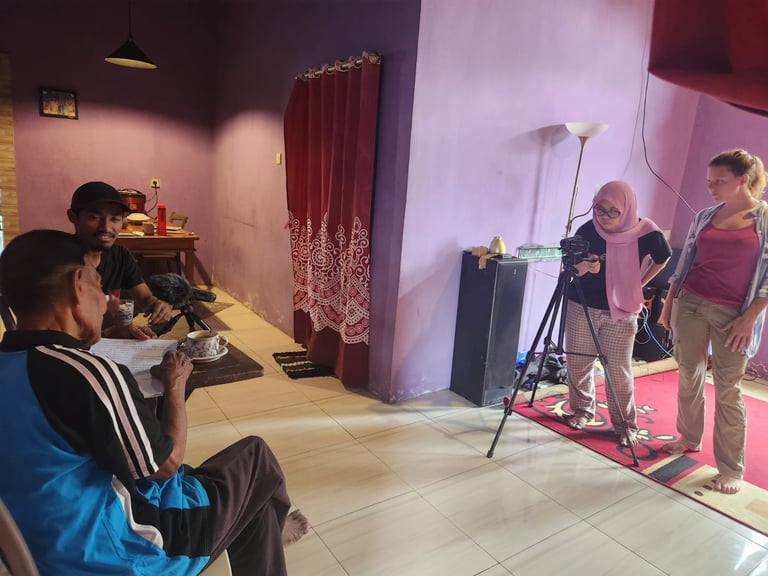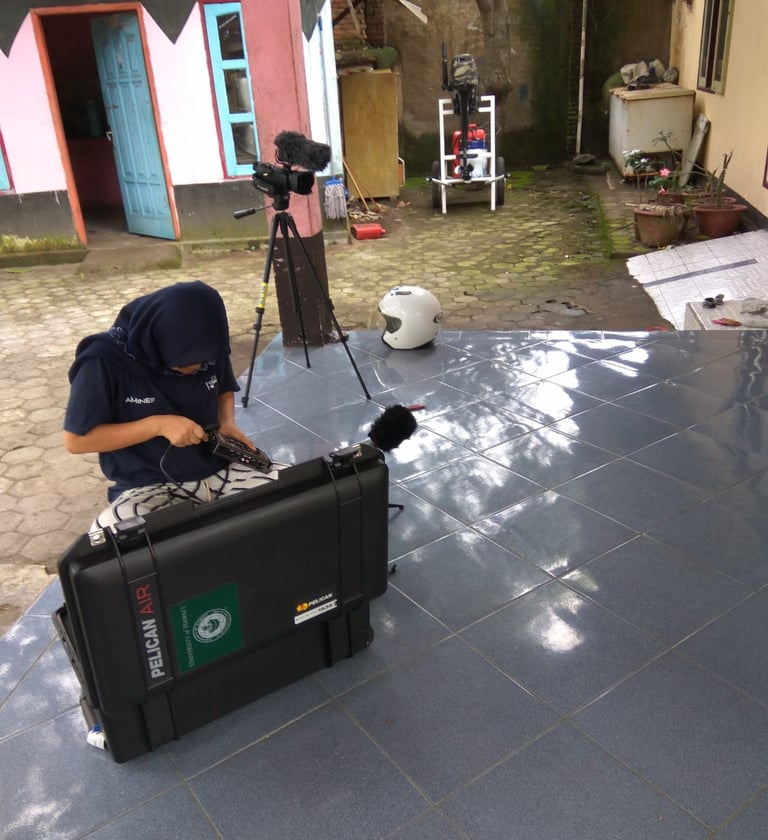Collaborative documentation and description of Saparua: An endangered language of Maluku
This project is funded by Endangered Languages Documentation Programme (ELDP) under the category of the Major Documentation scheme. I co-PI this project with Dr. Leah Pappas from University of Hawai'i at Mānoa We proposed this project after we had just earned our PhD together back in 2022 (TMI: we're besties :), and it was awarded funding for the period 2023–2026!
Saparua is an endangered Austronesian language spoken by fewer than 1,000 speakers on the island of Saparua, Central Maluku. The last two varieties spoken in only two Muslim villages: Siri Sori Islam and Kulur. The project is a community-based collaborative project which initially started by providing the community language documentation training, allowing them to continue documenting their language on their own. We have been working closely with four community members: Nur E Holle, Aisa Litiloly, Zaidan Ali Holle, and Ali Hanafi Sampalessy, who not only make recordings with the rest of the community members in both villages, but also transcribe and annotate them on ELAN, as well as providing us with insights into the language and cultures to help us with the descriptive part of the project.
We have conducted two field trips and managed to collect and process over 160 hours of recordings across a wide range of genres that have been archived on ELAR. One more fieldwork will be conducted in 2026.


Indonesia is the third most linguistically diverse country in the world, with more than seven hundred languages. However, 70% of its languages are endangered. This endangerment is the result of many factors, particularly language policy, as there has been an over-imposition of Bahasa Indonesia at all levels for decades as the language to unify the nation. The policy has had profound impacts on participation in the economy and education, causing more and more indigenous communities to give up their languages in order to increase their chances of achieving better socioeconomic conditions. Hence, there is an urgent need to document local languages before more of them become extinct and thus cannot be revitalized.
Despite language documentation being an established subfield of linguistics for 25 years, having undergone significant development in terms of techniques and principles, the field is still considered new in Indonesia. Moreover, language documentation models are mostly oriented toward North America, which has completely different sociocultural and linguistic contexts compared to Indonesia. I am therefore developing a model that functions as a guide for language documentation practitioners in the country, which I refer to as LADMI. LADMI addresses challenges and situations specific to the research system and linguistic landscape in Indonesia. This project is funded by BRIN and is still ongoing.
Developing a language documentation model for Indonesia: LADMI


I have been working on documenting and describing my own language, called Ampenan Sasak (AS), a variety of Sasak spoken in the old town of Ampenan on the island of Lombok. Sasak is an Austronesian language with around 3 million speakers. However, the language is undergoing a shift.
My documentation work on AS has been archived in the Kaipuleohone Language Archive at University of Hawai'i at Mānoa. My dissertation is based on this documentation project, in which I describe the morphosyntax of AS and argue that it differs from the previous grouping of the variety. I have also examined sociolinguistic variation in the distribution of pronominal clitics in AS. I am currently working on a manuscript on applicative constructions with my former advisor, Dr. Bradley McDonnell.

